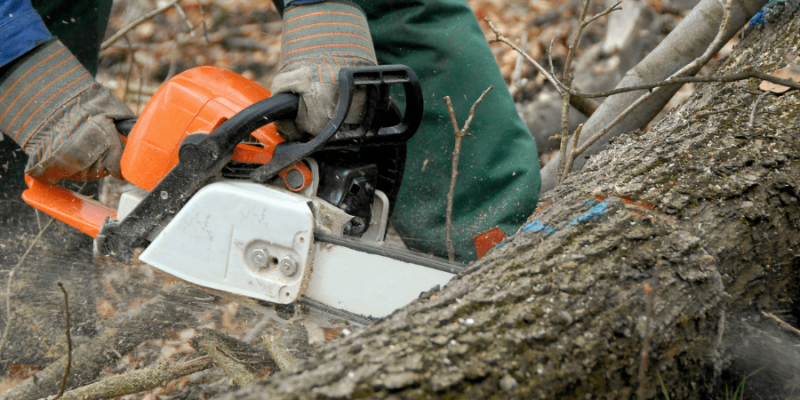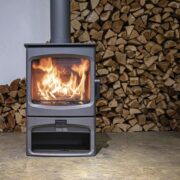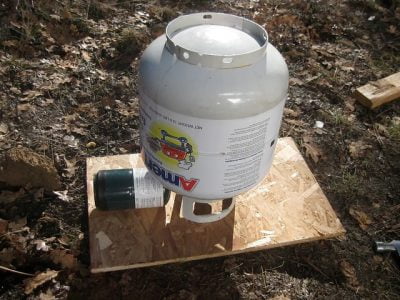Snow-covered Pine Forests are so gorgeous, especially ones with a beautiful river flowing in between the majestic forest. Looks like a picture right out of a television, right? Well, to take down such giants, you need something with enough teeth.
The Chainsaw is a blessing and a curse to Mankind. There is a controversy about how the Chainsaw came into being but, as far as it goes, the one initially constructed for cutting bone for surgery is far more different than the one we see today.
Chainsaw used for cutting down trees came much later, something around 1905, and over the years, it evolved, and the gadget became more refined and safer to use. To know how a chainsaw works, you should first understand the types of chainsaws and their part. Once you know about the machine, using it will become easier.
Types of Chainsaw
If you search online, you will see five or six kids, but keeping things simple, let us focus on three for now.
Cordless Electric
Those are the expensive fancy chainsaws that you will see at the stores. They have their perks but, if you think you can take down a heavy-duty job with this, I suggest you otherwise. Since it is portable and light, you can carry it around.
No products found.
It runs on rechargeable batteries but, the power is not up to the mark. Yes, it is sophisticated, low maintenance, safer to use, and won’t make you go deaf, but it is only good enough for small tasks. It is an excellent choice if you plan to do wood carving or sculpting foliage or if you are going to use it for household DIYs.
Corded Electric
Those are perfect to work with if you are working at your workshop. It is affordable and reasonable with unlimited power since you need no batteries or fuel of any kind. Plus, it to a socket, and you are ready to go.
- Powerful performance: 15 amp electric chainsaw with integrated chain brake. Ideal saw for...
- ControlCut Saw Chain: This Oregon chainsaw comes with a low maintenance chain included, which...
- Clever design: 16in chainsaw with built-in chain tightening system doesn't require any tools. Other...
- Automatic oiler: The automatic oiler distributes oil on the bar and chain while on the saw, keeping...
- Ergonomic: Lightweight and balanced, low vibration, over-mold comfortable handle. 2 year warranty...
Apart from the power source, it is like the cordless one but a little more in power and strength. It is easy to use and perfect for beginners. I would not suggest cutting something heavy-duty such as limber or log with this. It is modeled in such a way so that you can use it in your house without making much noise.
Gas or Fuel Powered
A gas of fuel-powered chainsaws is the most powerful one with the maximum strength. It’s a beast when it comes to taking down big trees and cutting timbers. If you can bear with the fuel smell, smoke, and the deafening-sound, you will do just fine.
No products found.
You can work with this for hours if you can handle the weight and have enough fuel. It is high maintenance and has a much higher risk of accidents than the other two chainsaws. Suited best for heavy-duty work such as shearing, trimming, and cutting large trees and timber.
If you are looking for a chainsaw for your household work, this is not the one. It is usually preferred by the lumberjacks and needs proper training before handling one.
Parts of Chainsaw

To understand the working of a chainsaw, you first need to familiarize yourself with the parts. It is nothing too complicated. You need to know mainly about three things.
Guide Bar
The long shiny steel bar you see at the Chainsaw’s front is the guide bar. Now, usually, the guide bar’s side range between 16″ to 24″ but, you can find other sizes too. There is even a pocket chainsaw now! The main job of the guide bar is to guide the cutting chain and hold it in place.
Chain
Well, the chain is essential when it comes to a chainsaw. It’s in the name itself so, it makes sense. Now, there are many kinds of chains that you can get yourself in the market, but before you decide on one, try and understand the use of each type.
Commonly you will hear types like a full chisel, semi-chisel, Chipper, Skip, Gauge, and all. When buying your chain, mention the intensity you are looking for and, the shopkeeper will suggest you accordingly. Want to know more about chains?
Engine
Most chainsaw use a simple traditional engine that runs on a two-stroke combustion engine or an electrically driven motor.
Unless you plan to open your engine and fix it yourself, you will not need to know much. An engine usually holds up well for ten years and, if you face problems, it is better to get a new one.
Other parts are simple so, you won’t need to know much about it. It would include a carburetor box, fuel tank, rear handle, and guard, chain stopper, throttle, handguard, spark plug. Those are the other functioning parts that are equally important and easy to understand.
Once you start your training or read the manual, you will get a clear idea about the whole machine. Want to know more? Check out this video.
How Chainsaw works
A chainsaw runs on the engine and, once you know the parts and how they operate, you are ready to go. You just have to learn how to start a chainsaw. You can either do this by reading the manual book that you will get when you purchase it.
Or you can try watching a video. If you are handling high power chainsaw, I suggest you take help from professionals and take some proper training. There are a few essential steps that you need to follow while starting a chainsaw.
- Stabilizing your Chainsaw
- Engaging the chain brake
- Turning the Chainsaw on
- Opening the choker
- Pull the cord to start
Once the machine starts, keep it running for a few minutes and then close the choker. Disengage the chain brake and lift your Chainsaw off the ground. You should be good to go if you took all the precautions and followed the steps. For more details about the mechanism of a chainsaw, check out this video.
Maintenance
Proper chainsaw maintenance is mandatory, or else using the machine becomes very dangerous and hazardous.
A chainsaw has many parts, and not maintaining one of them might affect productivity. It is already doing a very taxing job and needs that extra care to last a few years.
Here are a few tips and tricks on maintaining your Chainsaw so that it is safe and easy to use.
- Keeping your chain sharp should be your priority. So, sharpen your chain often. You will only need a chain sharpening kit and, you can buy one on Amazon easily.
- Clean your Chainsaw after every use. Debris on the chain may lead to rusting of the machine.
- When using a chainsaw, you need to have proper knowledge about chain tension. It can neither be too tight nor be too loose. You also need to keep in mind that the chain will not move smoothly if you do not lubricate it enough from time to time. So, make sure to use some good quality chain oil.
- When it comes to the gas model, maintenance is high; therefore, you need to take some extra care. You must clean the fuel tank now and then and change the filter or clear it. The filter helps the fuel in the tank stay clear of any dust, dirt, or wood chip. If you do not keep the filter clean, there is a high chance that your fuel will get contaminated and wreck your motor.
Safety
The Chainsaw is one of the most unsafe equipment and should not be manhandled. Proper training and caution are needed before you start using one. When you purchase a chainsaw, you will get a handbook where all the safety measures are listed. Make sure to read them well. Let us list down a few safety measures that one should take.
- Safety gears are the first thing that you should get when you purchase a chainsaw. Your must-haves should be Ear protection, Helmet with face screen or safety glasses, Steel-toed cut-resistant boots, Logging chaps, and leather gloves.
- Kickbacks are the most common and dreaded accident. Avoid the kickback zone when using your Chainsaw. Nowadays, chainsaws do have a chain breaker to avoid fatal accidents.
- Two more places where you are prone to get hurt are your thighs and left hand. If your trip with the Chainsaw in your hand, it is easy enough to cut yourself on the chain.
- If you are going to work on big trees, do not start working without a spotter or partner. Before you start, make sure you have a proper escape plan in case there is an accident.
- Maintain your Chainsaw properly as a dull chain saw is more dangerous than a sharp one. Also, make sure you clean or change the filter and handle the fuel carefully as it is combustible.
There are many safety measures that one should take before handling a chainsaw. Learning how to use a chainsaw is easy but learning how to use one safely is the main deal.
I hope you can tackle our fundamental fear of using a chainsaw after reading through this article. Do not be shy and finish those DIYs that you have been eyeing for the last few years.











[…] post, we have covered more about the chainsaw and its usage and answered your question about “How does a chainsaw work?” and more related […]
[…] covered more about the chainsaw and its associated features; we will also be answering about “How does a chainsaw work?” and the safety features relayed to […]
[…] if you are still wondering about the question of how a chainsaw works, what you can use it for, and also how to price the work done, then this tutorial will help you […]
[…] the guide to chainsaw mechanics reveals that using a chainsaw without a chain is generally not recommended and can be potentially […]
[…] the chainsaw functionality guide reveals that chainsaws are easy to maintain but have one adversary: rust. Moisture and chainsaws […]